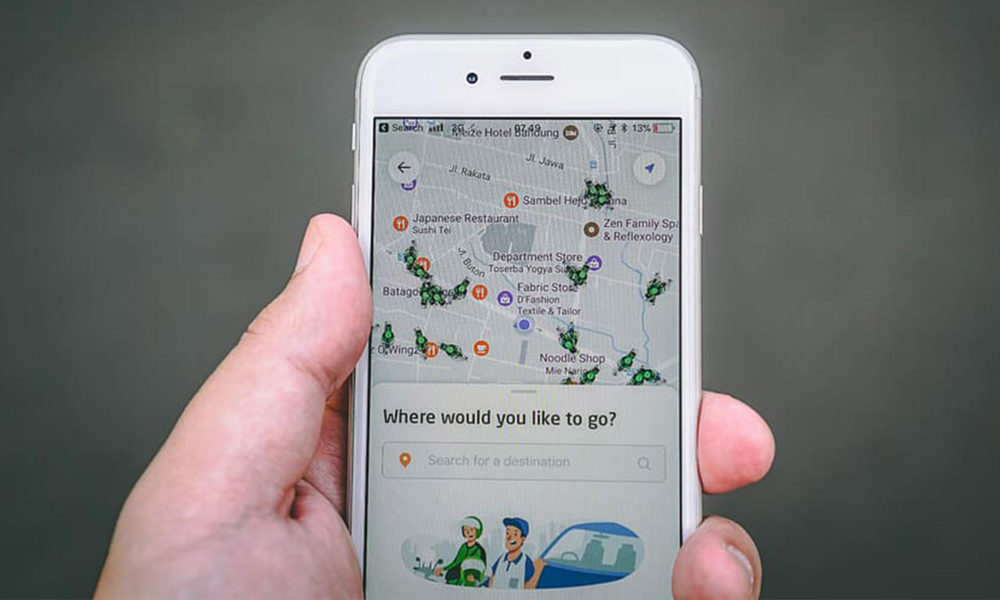Ride hailing services like Lyft and Uber have been changing the way people get around. My colleagues and I just released a short report – Ride-Hailing’s Climate Risks: Steering a Growing Industry toward a Clean Transportation Future – analyzing the climate pollution associated with these services and making recommendations to ensure they help improve our transportation choices without increasing pollution and congestion. You should read the whole report, but to whet your appetite, here are 5 key findings.
1. Ride-hailing services are growing rapidly
They have already vastly surpassed taxi service, and in the downtown areas of key metropolitan centers are now providing a significant and fast-growing share of rides (and traffic).
2. Non-pooled ride-hailing trips are more polluting than private car trips

A pooled trip in an EV is the lowest-carbon option for ride-hailing, while non-pooled trips in today’s ride-hailing vehicles produce about 47 percent more emissions than a trip of the same length in a private vehicle. See report for notes and sources.
Although a typical ride-hailing vehicle is more efficient than an average car, your ride-hailing trip creates significantly more pollution than driving yourself to your destination. This is because drivers of ride-hailing vehicles spend about 40% of their miles “deadheading”, the miles a ride-hailing vehicle travels without a passenger between hired rides. This extra driving more than offsets better fuel efficiency and leads to global warming pollution per mile that is an estimated 47 percent higher than a typical private car trip. Pooling, or combining two trips for different passengers, can effectively offset the increased pollution. Switching ride-hailing trips to electric vehicles (EVs) can reduce emissions even further. An electric, non-pooled, ride-hailing trip can cut emissions by half; an electric, pooled ride-hailing trip can cut emissions by two-thirds compared with a private vehicle trip in the average car (or about 80 percent compared with a non-pooled ride-hailing trip).
3. Many ride-hailing trips replace cleaner modes like transit and walking

Rider surveys in California indicate that 24 percent of non-pooled rides and 36 percent of pooled trips would have been by mass transit, walking, or biking, or not taken at all. In other words, ride-hailing users often would have used lower-carbon modes rather than cars. Circella, Matson, Alemi & Handy.
While it is natural to compare a ride-hailing trip to driving, in fact many people use ride-hailing services when they would otherwise have walked, biked, taken mass transit or not taken the trip at all. Based on rider surveys, a quarter or more of ride-hailing trips are replacing these lower emissions modes, and it could be even higher, especially in dense urban areas. Since mass transit, walking and biking are less polluting than driving, a shift from these modes to ride-hailing increases emissions, as discussed in point 4 below. But beyond pollution, moving riders away from transit, walking and biking to cars has negative impacts for neighborhoods, including increased traffic congestion and less fare revenue to invest in improving the transit system. This is especially problematic in dense urban areas with bad traffic congestion and good non-auto choices, such as San Francisco, Boston and Washington DC. Unfortunately, this is exactly where Uber and Lyft account for the highest share of driving, 13 percent, 8 percent and 7 percent respectively.
4. Ride-hailing trips generate 69 percent more pollution than the trips they replace

Emissions from a typical ride-hailing trip (pooled 15 percent of the time) are about 69 percent higher than the average of the displaced trips it replaces. If ride-hailing companies increase pooling to 50 percent and convert to electric vehicles, they can reduce emissions by about 52 percent compared with the displaced trips. See report for notes and sources.
When ride-hailing trips are compared to the trips they displace, the emissions consequences are even larger, with a typical ride-hailing trip, pooled 15 percent of the time, responsible for 69 percent more climate pollution than the trips it is displacing.

In California’s San Bernardino County, the regional rail system partnered with Lyft to provide discounted rides between select train stops and the local airport. Offering “last-mile” connections from mass transit to a final destination can make it more likely for people to use transit instead of drive the whole distance.
5. Electric, pooled rides and connecting to transit can dramatically reduce ride-hailing emissions
While ride-hailing trips today are increasing pollution, ride-hailing companies can turn things around by increasing the share of their rides that are pooled and helping their drivers get into EVs. A ride-hailing trip in an EV pooled 50 percent of the time would have emissions only about half those of the typical trip they displace. Another smart strategy is coordinating ride-hailing with transit. If a passenger uses a pooled ride hailing trip to connect with a train that covers the majority of their overall trip mileage, that can cut pollution by more than half compared to driving alone or taking a pooled ride-hailing all the way to the destination (see Figure 3 in the full report for details).
Steering ride-hailing toward a clean transportation future
Ride-hailing companies offer a convenient service and can provide people with flexible transportation choices to complement transit, walking, and driving. But based on their performance today, they are also creating significant problems, increasing driving in congested areas and pollution from transportation. While Uber and Lyft have made some promising commitments to sustainability initiatives, ride-hailing companies need to do much more to steer their businesses in a cleaner direction in line with their stated ambitions. They need to help get their drivers into electric vehicles, encourage their passengers to share rides through pooling, and connect to mass transit in a complementary manner.
Well-designed public policies at the local, state and federal level can help. For example, Chicago is structuring fees to encourage pooling and support transit, Colorado is making EV incentives available to for vehicles leased for ride-hailing, and California has enacted a Clean Miles Standard that requires ride-hailing to reduce emissions and shift to EVs.
Consumers also have a role to play, starting by urging Uber and Lyft to take decisive action to reduce global warming pollution from their services and letting them know you expect more climate-friendly choices. Consumers can also make conscientious choices about how they get around, like choosing a pooled ride, using ride-hailing to connect with transit, and walking, biking and using transit where possible.
As the climate crisis becomes even more urgent, it is more important than ever for the ride-hailing industry to contribute to a lower carbon, more sustainable transportation system. Read all the details in our new report.

